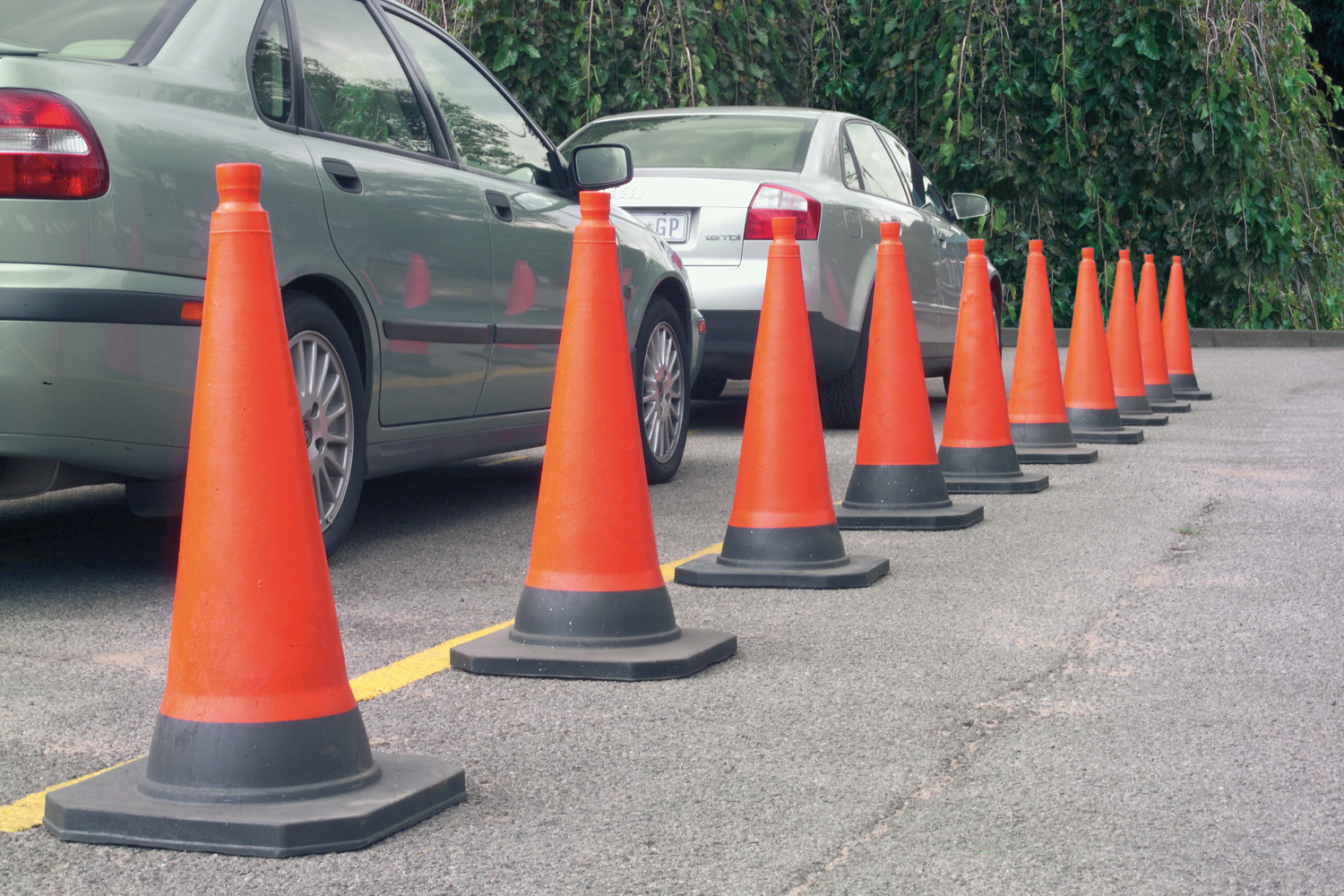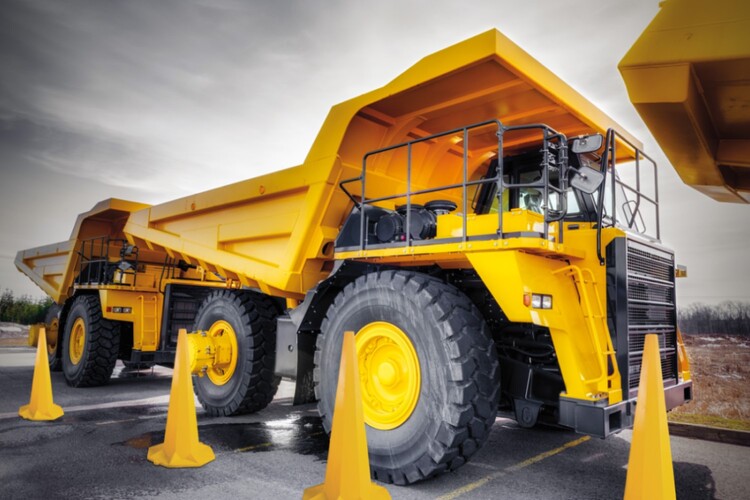Orange cones for traffic-related applications are known by names such as pylons, highway or road cones, and safety pylons. These names already explain their physical appearance. Shaped like a cone or witch hat, the structure is hollow inside with a sturdy base. It is placed on the surface area on the base with the cone peak pointing straight up.
Orange cones for traffic regulation purposes are used for applications ranging from the redirection of traffic to the creation of two lanes or merging lanes, and to direct vehicles around vehicle accident scenes and more. It is estimated that more than 138 million traffic cones (in all relevant colours) are used throughout the world. One can only speculate about the accuracy of the statement as there is no central repository for information on all Orange Cones or other coloured cones used for traffic.
The History of Traffic Pylons
The pylons, now widely used in traffic regulation applications, were preceded by wooden tripods and concrete blocks to direct traffic and warn of danger. Just the fact that these pylons were made from wood or concrete already explains why those types are no longer in use. Concrete is exceptionally heavy and thus difficult to deploy. The heaviness also adds to the cost of transportation. Then there is the issue of safety. Sure, the pylons can be sturdy and not easily blown over by the wind, but concrete doesn’t absorb the kinetic energy of a vehicle upon impact. As a road-safety device, it actually posed more of a hazard than being effective to warn road users of danger ahead.
The wooden tripod types did not perform well either. The tripods were easily blown over by wind from passing vehicles. In addition, such tripods lacked visibility, creating danger rather than helping to warn. Furthermore, the wood had to be protected against weather elements and thus did not have the necessary durability.
Charles D. Scanlon recognised the shortcomings of the devices. He was a street painter in the USA. Frustrated by the vehicles that drove over wet road marks, he designed and patented the rubber style traffic cone, widely used today. Indeed, the orange cones for traffic applications were designed in the forties. He must be credited for his genius because similar pylons with little changes to the design of old are now used globally and with great success.

The Benefits of Orange Cones
These cones have been designed to meet the objectives as originally intended by Scanlon. Benefits include:
- High visibility to ensure the devices are seen by the road users.
- They are made from a lightweight material to prevent damage to a vehicle that collides with it.
- Their stackable design allows for space-saving when stored and transported.
- Their hollow design allows for stacking and easy deployment.
- Lightweight material is used to minimise the load weight when transported and to ensure easy carrying by the workers that deploy the orange cones for traffic regulation purposes.
- Their sturdy bases keep them in place and provide for space to add weight. This prevents it from being blown over by wind from passing vehicles.
- High-glow appearance to make it visible in low-light or night-time conditions.
- Design that allows for the pylon to return to its upright position after a light blow.
Although the Orange Cones of today are made from a high-quality thermoplastic instead of just rubber, with over 70 years of proven use, the usefulness of these devices has stood the test of time.
The orange daylight glow cones of today, approved for traffic channelling and warning applications, are safe for vehicles since the devices are made from materials that can absorb kinetic impact. These devices come in different sizes. As such, it is recommended to consult with the relevant road maintenance and occupational health and safety officers, and the traffic departments in the particular province regarding the applicable size and colour for use related to traffic regulation.
Why Are Road Pylons Daylight Glow Orange?
The particular orange is a colour that is considered opposite to sky-blue. With such, it is also the most obvious colour and differs considerably from any backdrop colour in an outdoor environment. This ensures high-visibility and easy recognition by drivers as a warning or redirection marker. The orange used is recognised by OSHA and other important standards organisations for applications such as safety front-ends on guns.
Where and When are Orange Cones Used for Traffic Regulation Applications?
The pylons are used for marking temporary traffic regulation areas such as a part of the road where the road usage conditions differ from the normal conditions expected by road users. Such pylons are deployed at accident scenes, temporary road closures, special events, work zones, and lanes demarcated for specific uses. The pylons are also used for place reservation and to indicate drive areas at driving schools. Other uses include roadblocks, pedestrian crossings and at stationary vehicles on the road. Let’s look at some of these uses in greater detail:
- Accident scenes: The pylons are placed around the scene of the accident to prevent vehicles from driving over evidence or injured parties and vehicle parts scattered at the scene. The pylons also show appropriate alternative lanes around the accident scene.
- Temporary road closures: Pylons are placed at the entrance or exit points of parking lots or on the road to indicate temporary closure of a road. An alternative route is usually indicated.
- Special events: Part of a lane or an entire street can be temporarily closed off for an event such as a marathon or protest. The pylons are not used to prevent entrance. Instead, the orange cones are indicative of the area that is off-limits for use.
- Road work zones: When workers next to the road or on the road need to complete maintenance or construction work, orange cones are placed to indicate the areas reserved for their use.
- Reserved lanes: Orange traffic cones are also used to indicate lanes only accessible for specific users such as buses, taxis, pedestrians, and cyclists for a specific period every day or for a one-off event.
- Place or space reservation: A parking bay can be reserved for the management, disabled motorists, or deliveries. To prevent motorists from entering and using the parking bay, the pylons are placed in the middle or at the front of the parking bay.
- Drive or park areas at driving instruction schools: Driving schools often use sections of parking lots for driver instruction. They place the pylons at specific spots to create parking bays or routes that are used by the learner drivers.
- Roadblocks: Police, military, or traffic police officers place pylons at roadblocks to show motorists where to stop.
- Pedestrian crossings: The cones are often placed in front of pedestrian crossings during the peak crossing time. The controlled crossing is facilitated with handheld booms and designated personnel at, for instance, schools or senior-citizen complexes. The pylons are not intended as barriers or hindrances, but rather to show motorists where to stop or to warn them of the pedestrian crossing.
- Stationary vehicle on the road: Although the road safety triangle is more often used to warn motorists of a temporary stationary vehicle in the road or next to the road, the orange cones can also be used to direct motorists safely around the vehicle. It is often used for large stationary trucks where deliveries are made or where trucks undergo emergency repairs next to the road.
Other Uses
Although the orange cones are mostly used for traffic redirecting or regulation purposes, the pylons are also used to indicate parking bays at events, hazards at properties, to warn of wet areas in stores, indicate open manholes, or other hazards and for the purpose of training animals. The pylons are, furthermore, used as markers to indicate goal areas in sports events such as soccer or hockey and to create temporary drive lanes for go-carts.
Important Features of the Pylons
Various sizes are available. The larger ones are for road applications with the giant or monster-size ones used for areas where large vehicles operate. Smaller types are used for indoor, sports, and event control applications.
The pylons are made from durable materials and are UV-resistant. This ensures that the markers don’t lose their bright orange colour when exposed to sunlight. The pylons can be fitted with reflective strips to make them even more visible at night.
Choose the Right Type for the Application
Get in touch with our consultants for help in choosing the appropriate size and colour for your specific applications. Call us for more information about our range of orange cones for traffic-related applications.

